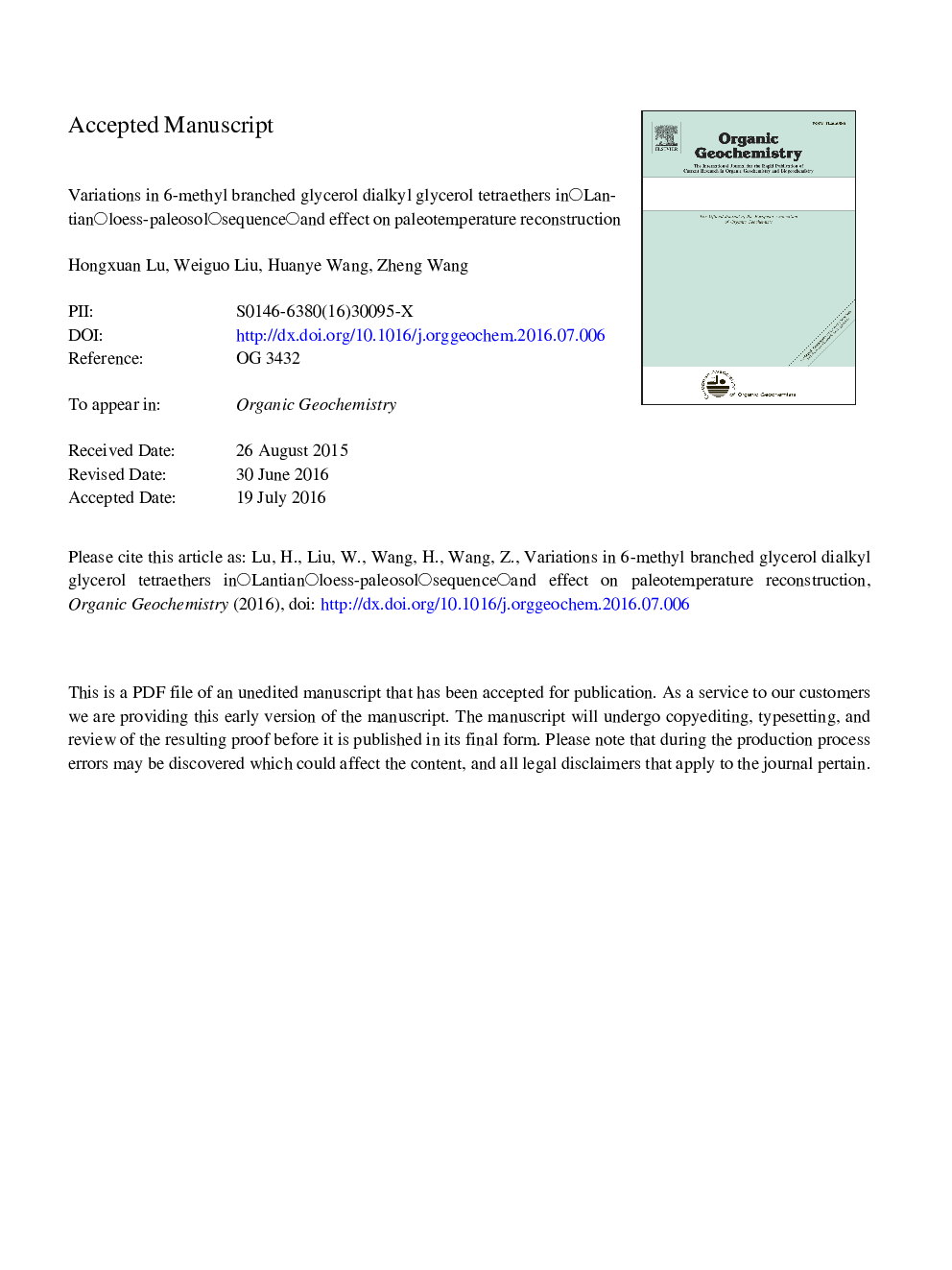| Article ID | Journal | Published Year | Pages | File Type |
|---|---|---|---|---|
| 5161606 | Organic Geochemistry | 2016 | 31 Pages |
Abstract
The distribution of branched glycerol dialkyl glycerol tetraethers (brGDGTs) has been increasingly used as a proxy in paleoclimate studies of marine, lacustrine and loess environments. A paleothermometer was subsequently quantified using a combination of the methylation and cyclization index of branched tetraethers (MBT-CBT) on the basis that MBT was related to mean annual air temperature and to a lesser extent soil pH, whereas CBT correlated only with soil pH. As newly described 6-methyl brGDGTs seemed to introduce a dependence on soil pH of this temperature proxy, we investigated the effect of the 6-methyl brGDGTs on an existing paleotemperature reconstruction. We describe the evolution in temperature and pH recorded in the Lantian loess-paleosol sequence for the last 120 kyr, using a new analytical method. The results show that 6-methyl brGDGTs were abundant, comprising on average 26% of the total amount of brGDGTs in the sequence. The fractional abundance of 6-methyl brGDGTs generally tracked the change in soil pH at the same soil section. A considerable delay (up to ca. 7 kyr) in the variation in fractional abundance of 6-methyl brGDGTs vs. that of 5-methyl brGDGTs was observed, possibly resulting from the different environmental factors to which they respond. We also found that variation in the reconstructed MAT values using different calibrations could be up to 7 °C, possibly due to soil moisture variation, since soil moisture may have a significant impact on the distribution of brGDGTs. Our results further indicate that early warming occurred on the southern Chinese Loess Plateau relative to a monsoonal precipitation increase, as reported elsewhere.
Related Topics
Physical Sciences and Engineering
Chemistry
Organic Chemistry
Authors
Hongxuan Lu, Weiguo Liu, Huanye Wang, Zheng Wang,
